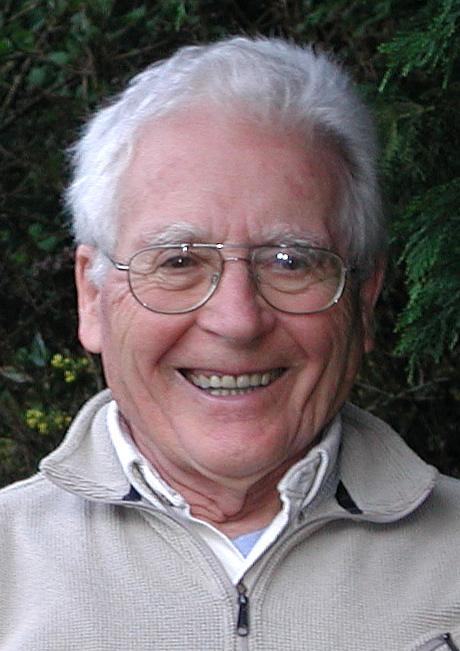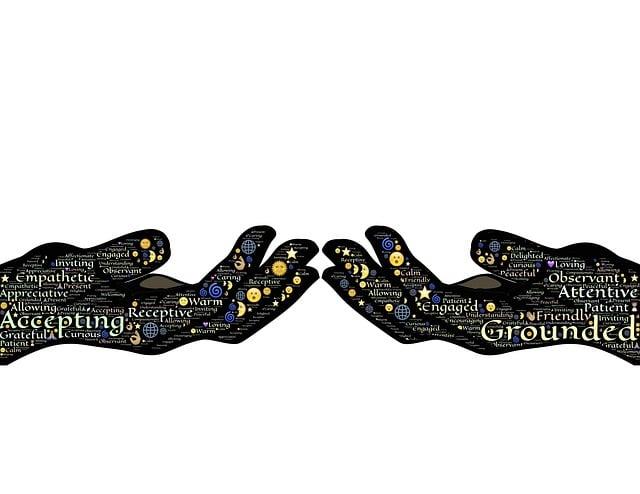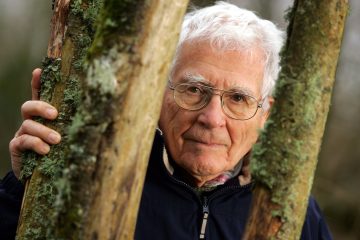Table of Contents
- The Legacy of James Lovelock and Lynn Margulis in Environmental Science
- Exploring the Gaia Hypothesis and its Impact on Ecological Thought
- The Synergy of Ideas: Collaborative Contributions to Earth System Science
- Lessons from Lovelock and Margulis for Future Sustainability Efforts
- Integrating Their Insights into Modern Environmental Practices
- Q&A
- In Conclusion
The Legacy of James Lovelock and Lynn Margulis in Environmental Science
James Lovelock and Lynn Margulis have profoundly influenced the way we understand the interconnection of life and Earth. Lovelock’s pioneering work on the Gaia Hypothesis posits that the Earth functions as a self-regulating organism, a concept that reshapes our comprehension of ecological balance. This idea encourages us to see the planet not merely as a backdrop for human activity but as a dynamic system where living organisms and their inorganic surroundings coalesce to maintain conditions for life. Margulis complemented this perspective through her research on symbiotic relationships among species, challenging the traditional view of competition as the primary driver of evolution.
One of the significant contributions from these two thinkers lies in their ability to unite various scientific disciplines under a singular, cohesive narrative. They fostered an integrative approach that incorporates insights from microbiology, ecology, and climatology. This approach emphasizes collaboration and mutualism among organisms, proposing that cooperation plays a crucial role in the survival and evolution of life. Such a perspective urges us to rethink conservation strategies and adopt policies that promote biodiversity, not as a luxury but as an essential pillar for sustaining life on Earth.
Furthermore, their combined legacy has ignited a global discourse on environmental responsibility. The advocacy for Earth’s health—be it through sustainable practices, climate action, or biodiversity preservation—owes much to Lovelock’s and Margulis’ foundational ideas. As organizations around the world strive to implement practices inspired by their theories, the principles of interconnectedness and systemic thinking have become integral in addressing contemporary environmental challenges. Their teachings now inspire a new generation of scientists, policymakers, and activists who recognize the pressing need for a harmonious relationship between humanity and the planet.

Exploring the Gaia Hypothesis and its Impact on Ecological Thought
The Gaia Hypothesis, articulated primarily by James Lovelock and Lynn Margulis, posits that the Earth functions as a self-regulating, complex system. This idea suggests that living organisms and their inorganic surroundings are intertwined in a way that maintains optimal conditions for life. Lovelock’s vision likens the planet to a single organism, where biological and physical processes work collaboratively to uphold environmental stability. Margulis, a cell biologist, emphasized how symbiotic relationships among species contribute to this overall homeostasis, proposing that cooperation is as vital as competition in evolution.
This revolutionary perspective has ignited a paradigm shift within ecological thought, encouraging scientists and environmentalists to consider the interdependencies between species and environment more profoundly. The Gaia Hypothesis advocates for a holistic approach, urging that the health of ecosystems be viewed not merely through individual species or climate factors but through the intricate web of interactions that sustain life. Some key implications of this theory include:
- Enhanced Conservation Strategies: Recognizing ecosystems as dynamic systems can lead to more effective conservation methods.
- Climate Change Awareness: Understanding the Earth’s feedback mechanisms prompts a more urgent approach to climate action.
- Interdisciplinary Research: The hypothesis encourages collaboration across various scientific fields, leading to richer insights into ecological health.
Despite its groundbreaking nature, the Gaia Hypothesis has faced criticism and skepticism within scientific circles. Detractors argue that while the theory highlights vital interconnections in nature, it risks anthropomorphizing the Earth by suggesting intentionality behind its processes. To ground the theory further, researchers have begun employing empirical data to study the feedback loops between biotic and abiotic factors. By focusing on observable outcomes and drawing parallels in ecological patterns, scientists aim to solidify the scientific foundation of Gaia’s principles.

The Synergy of Ideas: Collaborative Contributions to Earth System Science
In the fascinating realm of Earth system science, the ideas brought forth by James Lovelock and Lynn Margulis showcase an extraordinary convergence of thought that has significantly influenced our understanding of the interconnectedness of biological and environmental systems. Both scientists tackled complex questions about life on Earth and our planet’s sustainability through their respective theories. Lovelock’s Gaia Hypothesis proposed that the Earth functions as a self-regulating system, where living organisms interact with their inorganic surroundings, ultimately maintaining conditions conducive to life. Margulis, on the other hand, championed the endosymbiotic theory, which emphasized the role of symbiosis in evolution, suggesting that cooperation among species is critical for the complexity of life. Together, these concepts underscore a vital narrative in Earth system science: the synergy between living organisms and their environment is foundational to ecological balance.
The contributions from these pioneers have not only introduced groundbreaking theories but have paved the way for collaborative research across multiple disciplines, enhancing our approach to environmental issues. Consider the myriad of ways their insights have influenced current scientific studies:
- Climate Change Research: The integration of Lovelock’s system regulation principles with Margulis’s focus on biological interactions provides a holistic view of climate dynamics.
- Conservation Biology: Merging evolutionary biology with environmental science offers innovative conservation strategies that respect ecological interdependencies.
- Sustainability Practices: Their ideas inspire sustainable practices that recognize the fragile relationships within Earth’s systems, advocating for policies that protect these vital interactions.
Furthermore, the collaboration fostered by Lovelock’s and Margulis’s groundbreaking ideas encourages a broader dialogue among scientists, policymakers, and the public. By drawing on a multiplicity of viewpoints and establishing a framework for inclusive communication, the scientific community can better tackle pressing global issues such as biodiversity loss, habitat destruction, and climate disruption. The synthesis of their rich ideologies invites not only academic discourse but also public engagement, fostering a sense of responsibility toward our planet.

Lessons from Lovelock and Margulis for Future Sustainability Efforts
James Lovelock and Lynn Margulis introduced groundbreaking ideas that have reverberated throughout the field of environmental science, influencing modern understanding of ecosystems and sustainability. Their concept of the Gaia hypothesis highlights the intricate connections within our planet’s systems, suggesting that life interacts with the earth to maintain conditions favorable for existence. This interdependence underscores the need for a holistic approach in our sustainability strategies, encouraging policymakers and communities to recognize the relationships among various environmental aspects, from climate change to biodiversity loss.
Building upon their insights, future sustainability efforts must emphasize collaborative actions across disciplines. Stakeholders ranging from governments to local communities should work together to create adaptive management strategies that prioritize the health of our planetary systems. This collaborative mindset can lead to innovative solutions, as diverse perspectives combine to tackle issues such as resource depletion, pollution, and habitat destruction. Key practices in this approach might include:
- Integrative Planning: Incorporating ecological principles into urban development and agriculture.
- Community Engagement: Involving local populations in conservation efforts to create stewardship of their environments.
- Adaptive Management: Continuously monitoring and adjusting strategies based on feedback from ecosystems and communities.
The integration of technology in sustainability can also further Lovelock and Margulis’s teachings. By harnessing advancements in data collection, AI, and modeling, we can better understand the complex interactions within our ecosystems. Below is a simple overview of potential technological tools for sustainability:
| Technology | Application |
|---|---|
| Remote Sensing | Monitoring ecosystem health and land use changes. |
| AI Analytics | Predicting ecological outcomes and optimizing resource use. |
| Blockchain | Enhancing transparency in supply chains for sustainable products. |
Ultimately, the teachings of Lovelock and Margulis serve as a reminder that every element within our ecosystem plays a critical role in maintaining the delicate balance of life. As we work towards future sustainability, embracing their holistic perspective and innovative technologies will be essential. This approach not only supports the well-being of our planet but also fosters resilience in the face of environmental challenges.

Integrating Their Insights into Modern Environmental Practices
The legacies of James Lovelock and Lynn Margulis have significantly shaped contemporary environmental practices. Their synergistic ideas contribute to a holistic view that emphasizes the interconnectedness of life and ecosystems. Inspired by the Gaia hypothesis proposed by Lovelock, many modern conservation strategies now reflect the concept that Earth operates as a self-regulating system. This approach calls attention to the balance required among various species and their environment, which has led to the development of practices that advocate for the preservation of biodiversity.
Integrating their insights, environmentalists focus on sustainable practices that align with natural processes. Key approaches include:
- Permaculture: Designing agricultural systems that mimic ecological relationships.
- Restorative Ecology: Initiating projects that restore degraded ecosystems to their natural states.
- Carbon Farming: Utilizing land management practices to sequester carbon and reduce greenhouse gas emissions.
Their theories have also inspired the global movement towards circular economies, which prioritize the efficient use of resources, minimizing waste, and enhancing renewable energy adoption. Projects designed with these principles in mind demonstrate a commitment to protecting the planet while fostering economic growth. Below is a table that summarizes modern environmental practices influenced by Lovelock and Margulis:
| Practice | Description | Impact |
|---|---|---|
| Agroecology | Combines agriculture with ecological principles. | Improves soil health and enhances biodiversity. |
| Zero Waste | Aims to redesign resource life cycles for waste elimination. | Reduces pollution and conserves resources. |
| Renewable Energy Projects | Harnesses natural processes for sustainable energy. | Reduces dependence on fossil fuels. |



0 Comments